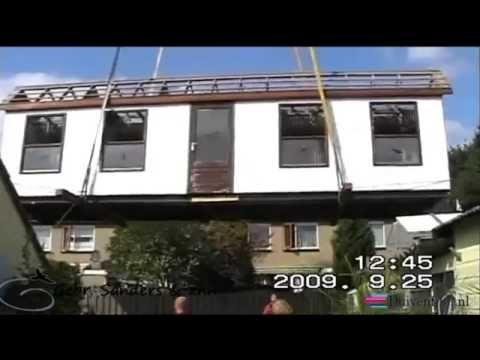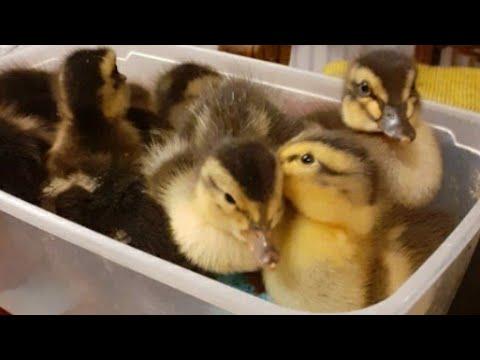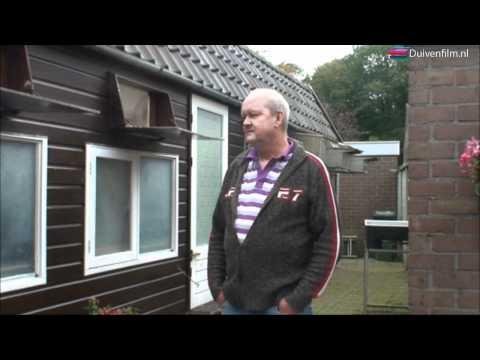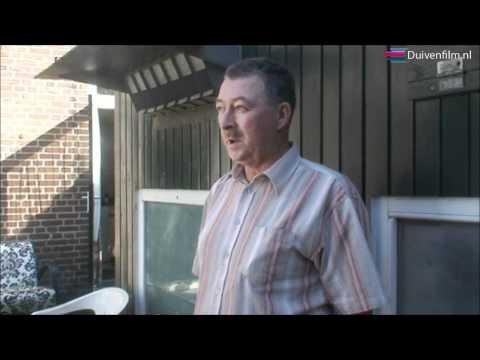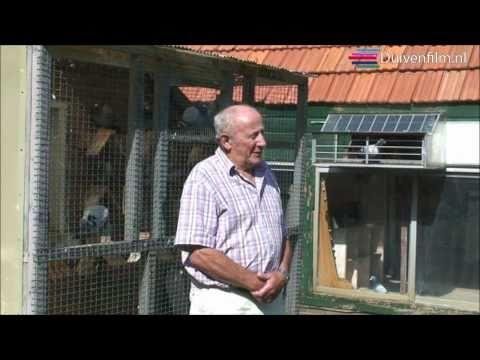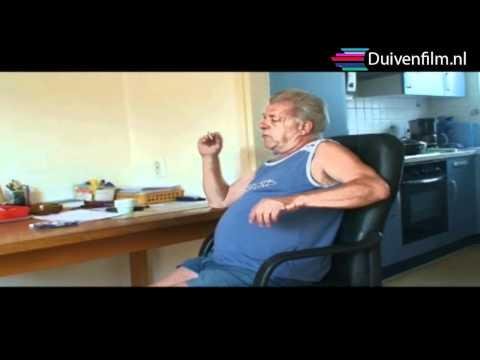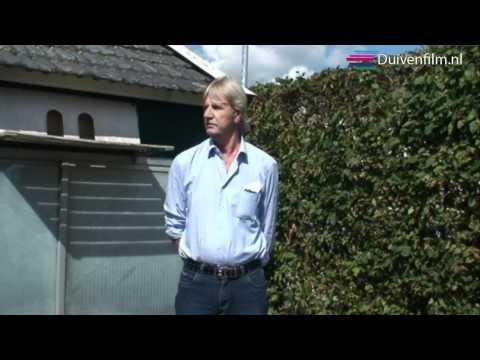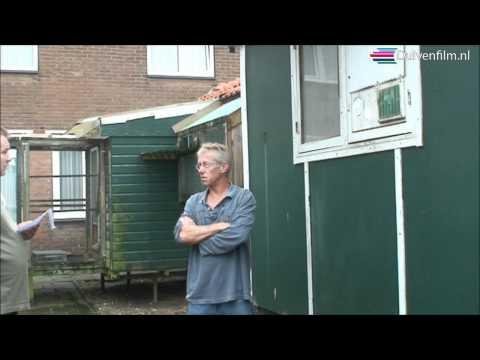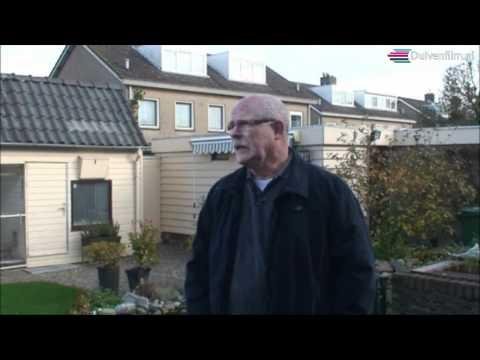tel +49 1511 290 1511
The History of the Belgium Racing Pigeon : The Janssen Brothers - Arendonk (BE)
It is not our intention to write again about this famous loft. The Janssen Brothers do not need any further advertisement—their publicity is well taken care of by their great feathered champions, both here and abroad.
People from all over the world come to the loft at the Schoolstraat in Arendonk.
All are here, from the average Belgian fancier who can pay only 2,500 francs for an 8-day old youngster, to the rich Mexican or American, who is abie to pay a thousand dollars or more, for a stock or race bird. The strain here at Arendonk has always been kept pure; the only outsider that was ever introduced into the collection came trom Mons. Fabry, and was actually half-Fabry and half-Janssen! Aptly enough, it was known as the "Halve Fabry," but was later given another name! This was the only addition that was ever permitted to come into the loft. Actually, this is a strain that in 1973, had been in existence for more than 70 years, and has been cultivated as closely as possible, to the Uiens, the Wegges and the Gits pigeons. The birds in the lofts here are of one family.
Outsiders, who feel they know these pigeons thoroughly, will never be abie to find the actual background of the breeding procedures as used by the brothers — simply because the Janssen Brothers have never told anyone anything! They are the only ones that know their pigeons and their strain! They are the only ones that know just how they proceed in their breeding program, every year—slate, red, clear blue, white and grey, red and yellow eyes, etc. etc. This is their secret weapon which permits them to breed pigeons of the same conformation, year after year... soft plumage, supple wings, round and swollen muscles, and always in the best of health.
The Janssen Brothers did not achieve their great world-wide fame through their incredible successes in the National long-distance races. Their fame comes chiefly from the achievements of thousands of pigeon fanciers in Belgium, the Netherlands, Germany, etc. who have used their birds at stock, and who have been abie to compete successfully in races up to and including 750 miles—especially in the Netherlands, where these long distances carry so much weight in the yearly events.
Their world-wide fame has never affected the Janssen Brothers, who are basically, simple people; they listen to the advice of others, when it is given,
but always continue in their own fashion, when all has been said and done! In the long run, their own opinion is what guides them in the pairing, breeding,
feeding and racing. To this day, the number of pigeons that they keep is usually limited to under a hundred birds. In our records, we have found a list of hundreds of direct Janssens that were sold in public sales from 1950 up to and including 1971. We also have a long list of stock-pairs, as they were kept by the Janssen Brothers, and at random, we have written down a few. Our intention here is to show that the Brothers, as successors of their late father, have not changed their methods during the past half-century! Please note carefully how these men have alwaysnamed and sold their pigeons.
The eight birds listed above are sons and daughters of the stock pairs thatare listed herewith. The thousands of pigeons fanciers who have introduced direct Janssens, were given a bill of sale, when purchasing, which listed the origin, name-stamp and signature of the owner. Anyone who could not show such a bill of sale should never say that he had in his loft, a truly "Made in Arendonk" pigeon! Seldom was the purchaser given a pedigree for his bird!
From the information submitted above, it is obvious that during the pastquarter of a century, the Janssen Brothers have done considerable inbreeding.
They have thus succeeded in creating a strain of their own — a strain of which they alone know the standards and the procedures by which the stock-pairs are formed. Let us assume that the Janssen Brothers took a certain characteristic in the formation of the stock-pairs, then we would have to look for findings such as these:
- the blue with white and grey eyes;
- the dark-colored birds with grey and red eyes;
- the slate-blues, with red and white eyes;
- the reds and the mealies, with white and red eyes;
- the light checkers, with red, grey and white eyes;
- the blues, with yellow eyes;
- the light and blue barges with white, grey and red eyes.
The History of the Belgium Racing Pigeon : The Janssen Brothers - Arendonk (BE)
It is not our intention to write again about this famous loft. The Janssen Brothers do not need any further advertisement—their publicity is well taken care of by their great feathered champions, both here and abroad.
People from all over the world come to the loft at the Schoolstraat in Arendonk.
All are here, from the average Belgian fancier who can pay only 2,500 francs for an 8-day old youngster, to the rich Mexican or American, who is abie to pay a thousand dollars or more, for a stock or race bird. The strain here at Arendonk has always been kept pure; the only outsider that was ever introduced into the collection came trom Mons. Fabry, and was actually half-Fabry and half-Janssen! Aptly enough, it was known as the "Halve Fabry," but was later given another name! This was the only addition that was ever permitted to come into the loft. Actually, this is a strain that in 1973, had been in existence for more than 70 years, and has been cultivated as closely as possible, to the Uiens, the Wegges and the Gits pigeons. The birds in the lofts here are of one family.
Outsiders, who feel they know these pigeons thoroughly, will never be abie to find the actual background of the breeding procedures as used by the brothers — simply because the Janssen Brothers have never told anyone anything! They are the only ones that know their pigeons and their strain! They are the only ones that know just how they proceed in their breeding program, every year—slate, red, clear blue, white and grey, red and yellow eyes, etc. etc. This is their secret weapon which permits them to breed pigeons of the same conformation, year after year... soft plumage, supple wings, round and swollen muscles, and always in the best of health.
The Janssen Brothers did not achieve their great world-wide fame through their incredible successes in the National long-distance races. Their fame comes chiefly from the achievements of thousands of pigeon fanciers in Belgium, the Netherlands, Germany, etc. who have used their birds at stock, and who have been abie to compete successfully in races up to and including 750 miles—especially in the Netherlands, where these long distances carry so much weight in the yearly events.
Their world-wide fame has never affected the Janssen Brothers, who are basically, simple people; they listen to the advice of others, when it is given,
but always continue in their own fashion, when all has been said and done! In the long run, their own opinion is what guides them in the pairing, breeding,
feeding and racing. To this day, the number of pigeons that they keep is usually limited to under a hundred birds. In our records, we have found a list of hundreds of direct Janssens that were sold in public sales from 1950 up to and including 1971. We also have a long list of stock-pairs, as they were kept by the Janssen Brothers, and at random, we have written down a few. Our intention here is to show that the Brothers, as successors of their late father, have not changed their methods during the past half-century! Please note carefully how these men have alwaysnamed and sold their pigeons.
The eight birds listed above are sons and daughters of the stock pairs thatare listed herewith. The thousands of pigeons fanciers who have introduced direct Janssens, were given a bill of sale, when purchasing, which listed the origin, name-stamp and signature of the owner. Anyone who could not show such a bill of sale should never say that he had in his loft, a truly "Made in Arendonk" pigeon! Seldom was the purchaser given a pedigree for his bird!
From the information submitted above, it is obvious that during the pastquarter of a century, the Janssen Brothers have done considerable inbreeding.
They have thus succeeded in creating a strain of their own — a strain of which they alone know the standards and the procedures by which the stock-pairs are formed. Let us assume that the Janssen Brothers took a certain characteristic in the formation of the stock-pairs, then we would have to look for findings such as these:
- the blue with white and grey eyes;
- the dark-colored birds with grey and red eyes;
- the slate-blues, with red and white eyes;
- the reds and the mealies, with white and red eyes;
- the light checkers, with red, grey and white eyes;
- the blues, with yellow eyes;
- the light and blue barges with white, grey and red eyes.
- Categorie
- Overige
Log in of aanmelden om een reactie te plaatsen.
Wees de eerste die een reactie plaatst.





